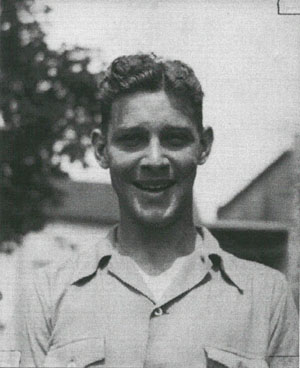

Remember...
Joseph William Carroll
1921-1941
"If you don't stand for something, you will fall for anything."
Malcolm X
 |
Remember...Joseph William Carroll
|
Joseph William Carroll was born in 1921 in Fairmont, West Virginia. Joseph, nicknamed "Joe Bill," was the son of Della C. Carroll and Joseph Carroll, who later got a divorce. Presumably, after the divorce, his father moved to Texas to work in the Val Carroll Oil Company, while his mother stayed in West Virginia. According to the 1940 Federal Census, Della C. Carroll was a lodger in the home of Tillar and Florence Chapman. Joseph was raised by his grandparents, Thomas W. and Ellen Carroll, in Marion County, West Virginia, because they were better able to care for him financially. He graduated from Fairview High School in 1939.
West Virginia has always provided a generous percentage of its population for service in the military, and for World War II, it reported the fifth highest percentage among all of the states in the U.S. Many of these men and women would have come from coal camps. In the early 1900s, it was natural to see coal camps, also called coal towns, all around the state. A coal camp provides residence for the miners and their families in that area. Marion County is a part of the Fairmont Coal Field, which has been shipping coal since the 1850s and is still mining coal today. On account of this, Marion County had a large number of coal towns. Marion County also had a huge population and economic boom during in the early 20th century. The population doubled, and industry thrived during this time.
Shortly after graduating from high school, Joseph enlisted in the Navy on November 7, 1940, in Baltimore, Maryland at the age of 20. New recruits started out as seamen, who usually did the worst jobs around the ship. With the war looming, the Navy didn't have time to train these troops in all facets of their duties, so they were trained on the ship. Once the seaman managed to get promoted to the next rank, his training became more specific. Joseph's rank, fireman 2nd class, worked specifically in fire suppression. They wore a red branch mark on the left shoulder of blue and white jumpers. Firemen would each command a small group from a rank below them, most likely seamen, and the fireman in turn would report to the chief.
The Japanese took the United States by surprise on December 7, 1941, by attacking Pearl Harbor. They managed to damage and sink five battleships, one of those being the USS Oklahoma. The USS Oklahoma was docked in berth Fox 5 in Battleship Row next to the USS Maryland when the Japanese attacked. The ship was hit by a total of nine torpedoes in all. One of these torpedoes hit the hull and resulted in the Oklahoma capsizing. Some of the crew were forced to abandon ship when two more torpedoes hit; many, however, remained fighting until the end. The Navy did not immediately salvage the Oklahoma because of the amount of damage she took. They later began to salvage it in March 1943 and managed to get it on dry land on December 28. It later sank again in May 1947. In 2006, a portion of the ship was presumably found and flown to Tinker Air Force Base and then delivered to the Muskogee [Oklahoma] War Memorial Park in 2010, where it resides to this day.
Barbour, Russ. "World War II." e-WV: The West Virginia Encyclopedia. 14 December 2016. https://www.wvencyclopedia.org/articles/1353. Accessed 01 April 2017.
DellaMea, Chris. "Fairmont Coalfield." Coal Fields of the Appalachian Mountains. http://www.coalcampusa.com/nowv/fairmont/fairmont.htm. Accessed 01 April 2017.
"Home Page." The Official Website of the USS Oklahoma. http://www.ussoklahoma.com/. Accessed 01 April 2017.
"Joseph William Carroll." HonorStates.org. 2017. http://www.honorstates.org/index.php?id=128979. Accessed 01 April 2017.
Koon, Thomas J. "Marion County." e-WV: The West Virginia Encyclopedia. 03 June 2013. https://www.wvencyclopedia.org/articles/1504. Accessed 06 April 2017.
"USS Oklahoma (BB-37)." Wikipedia. 21 March 2017. https://en.wikipedia.org/wiki/USS_Oklahoma_(BB-37). Accessed 01 April 2017.
Article prepared by Dana Foual, George Washington High School Advanced Placement U.S. History

West Virginia Archives and History welcomes any additional information that can be provided about these veterans, including photographs, family names, letters and other relevant personal history.